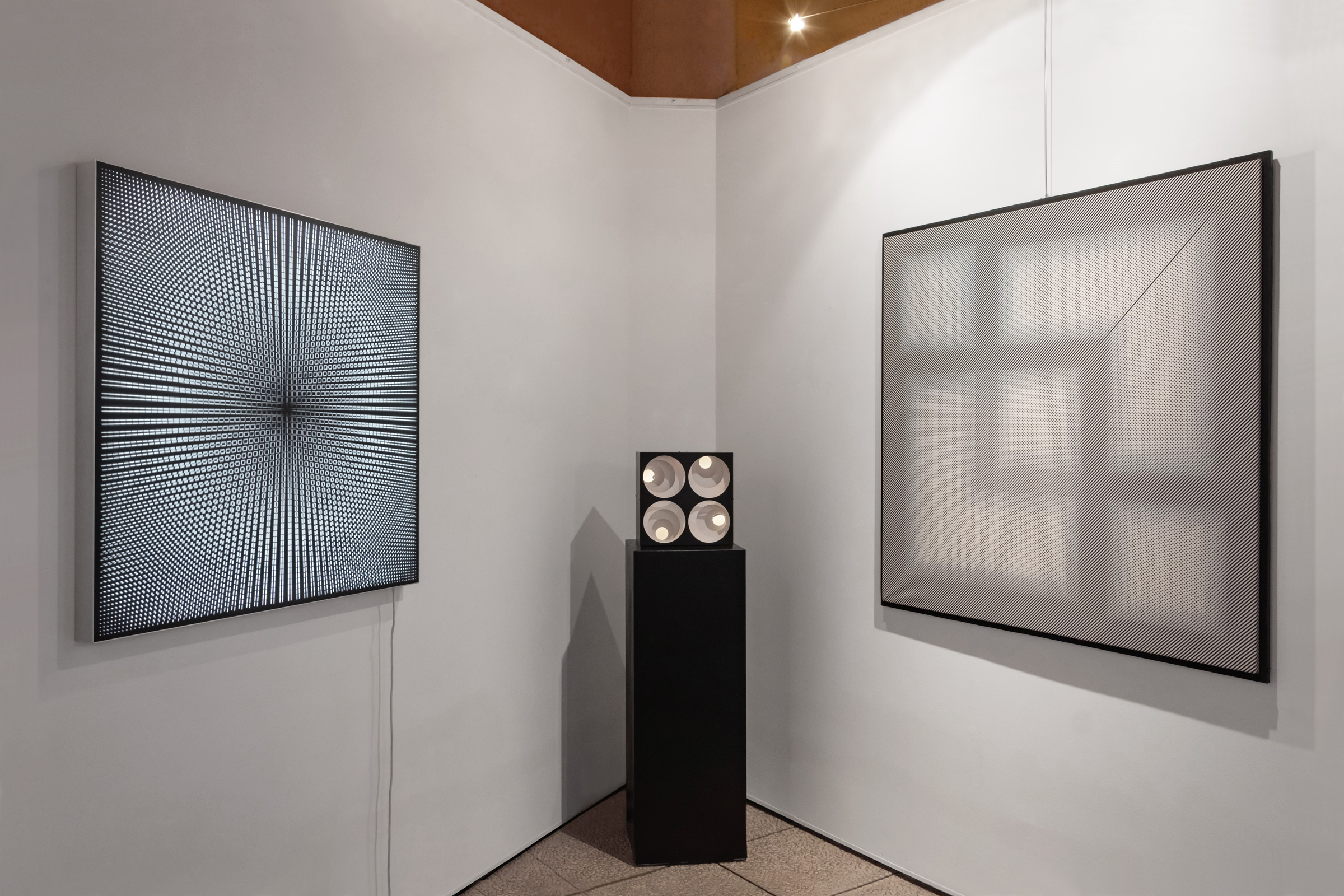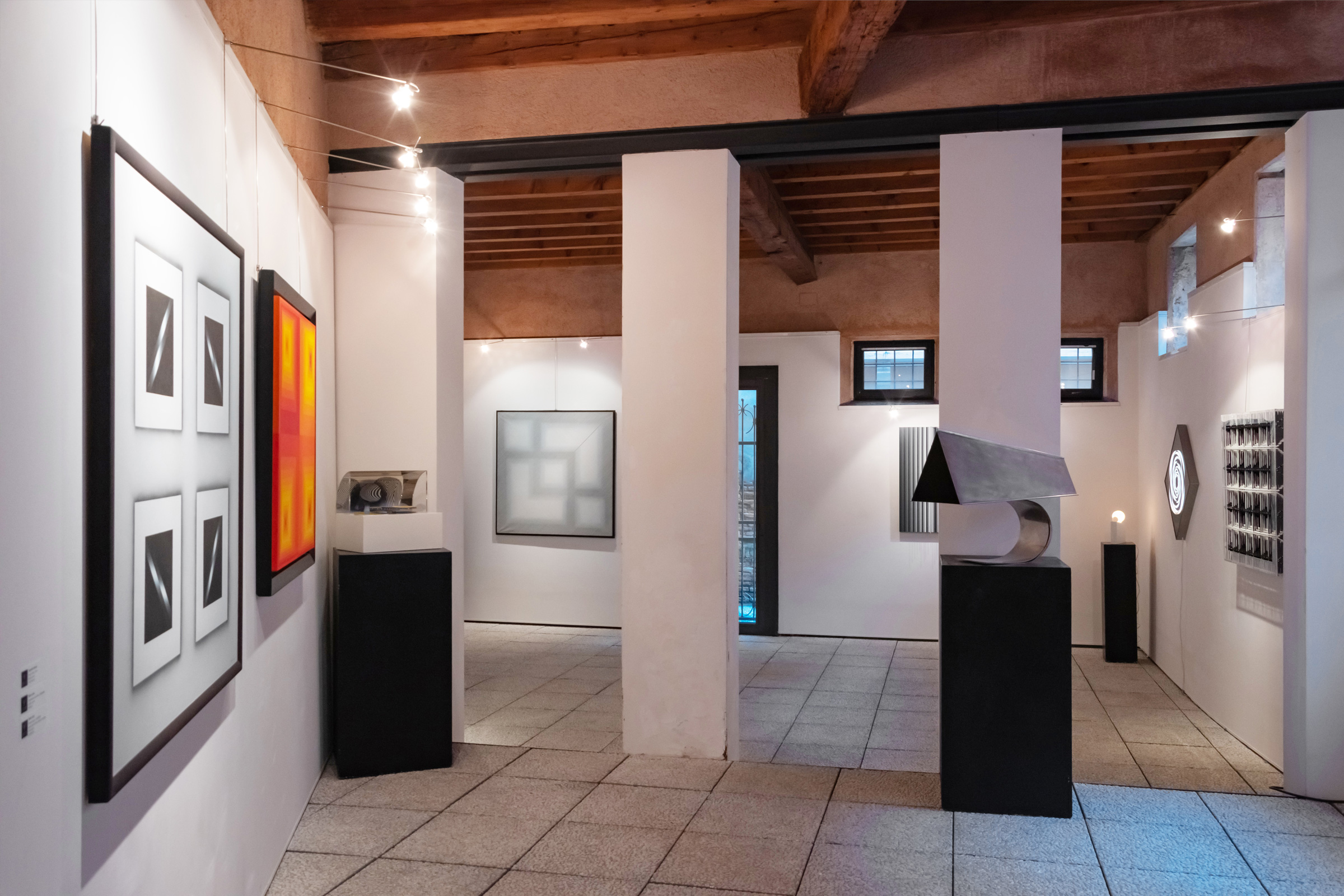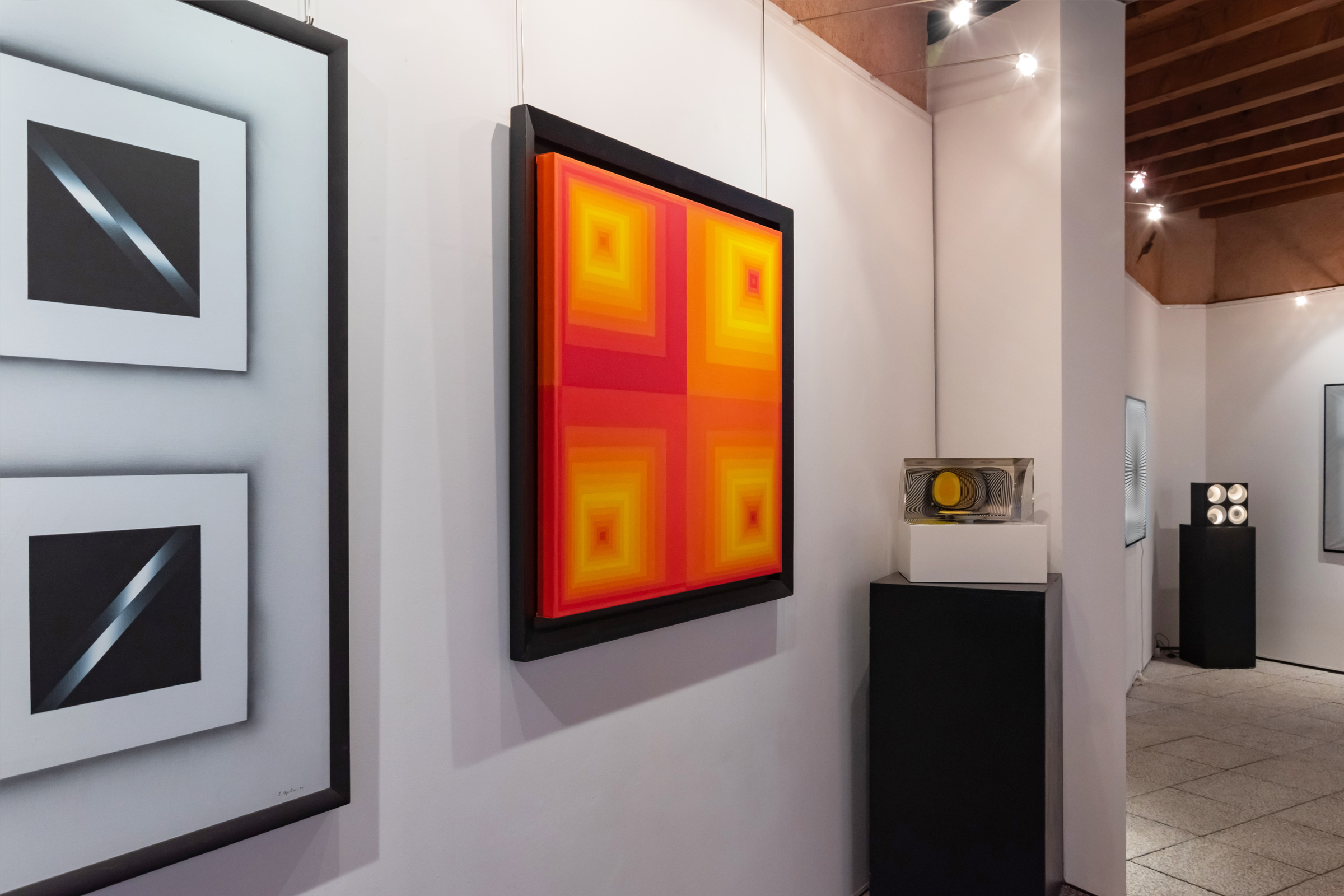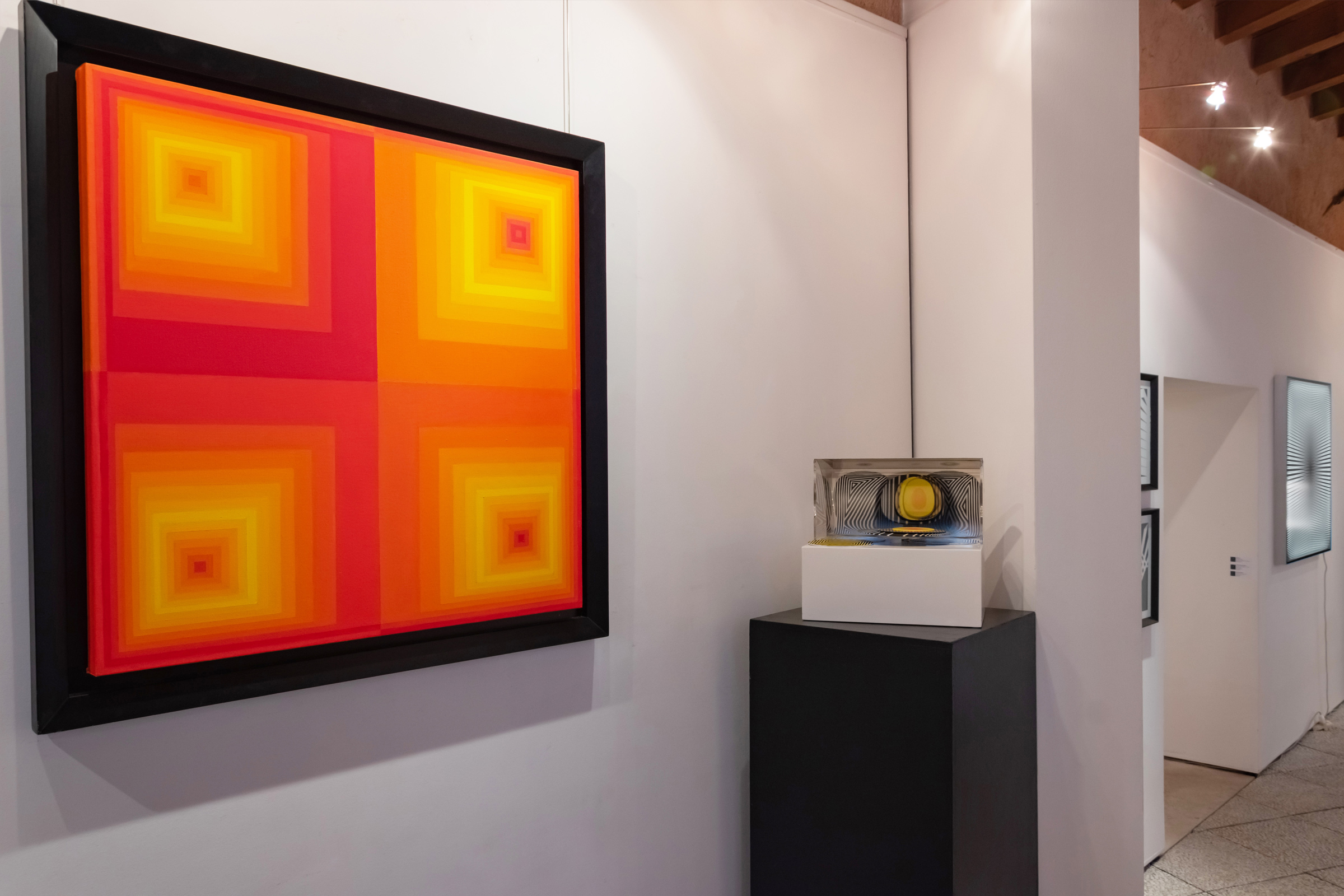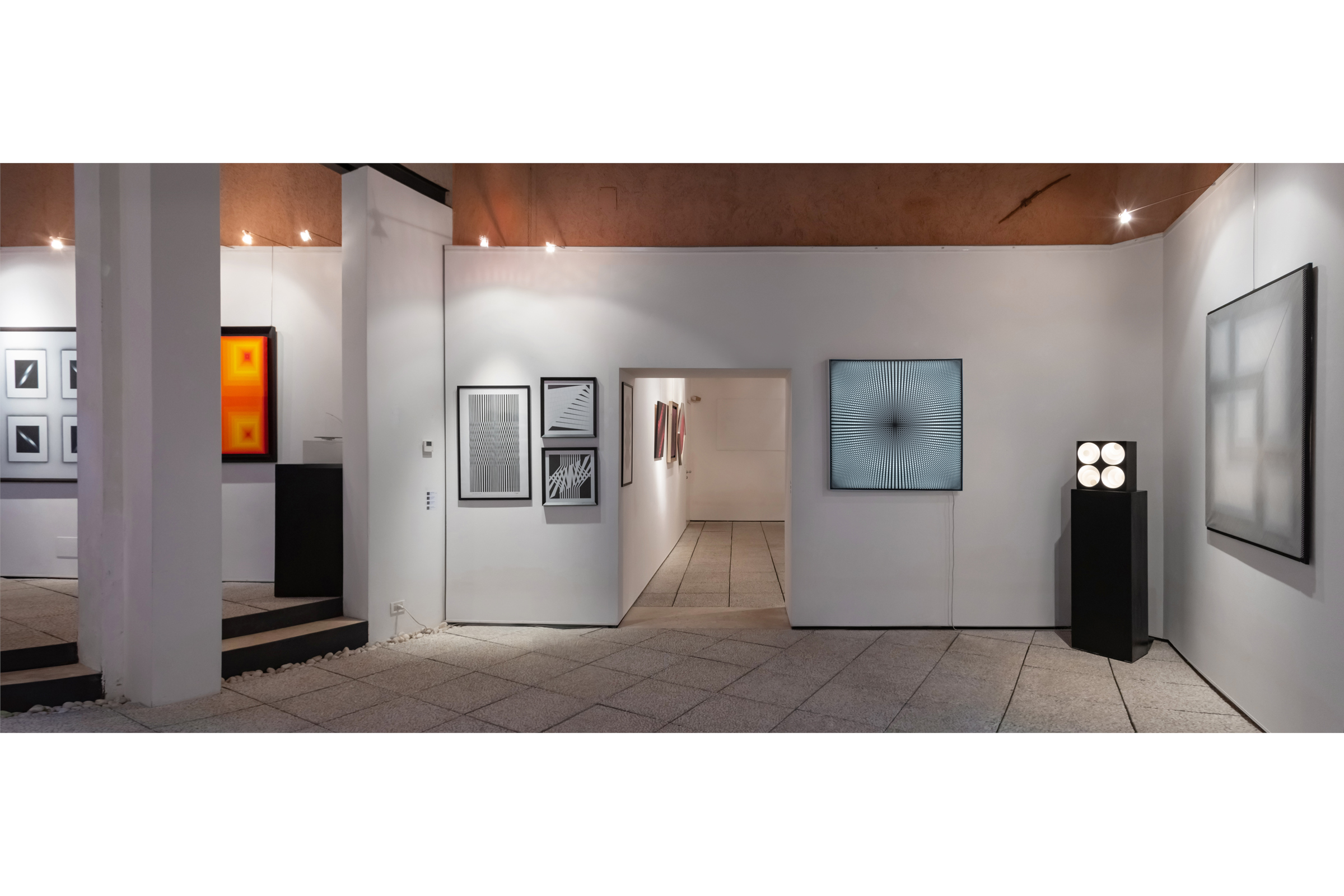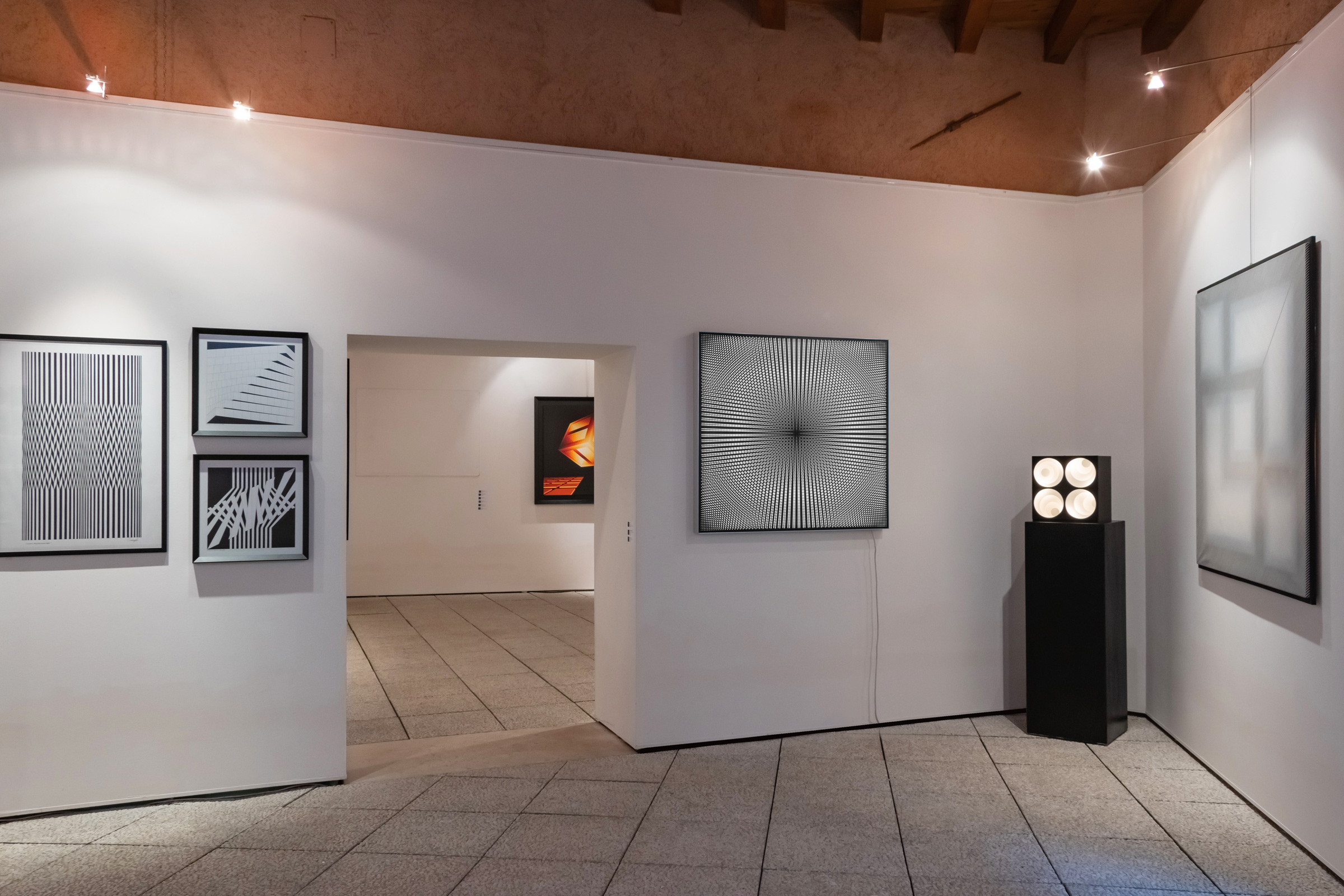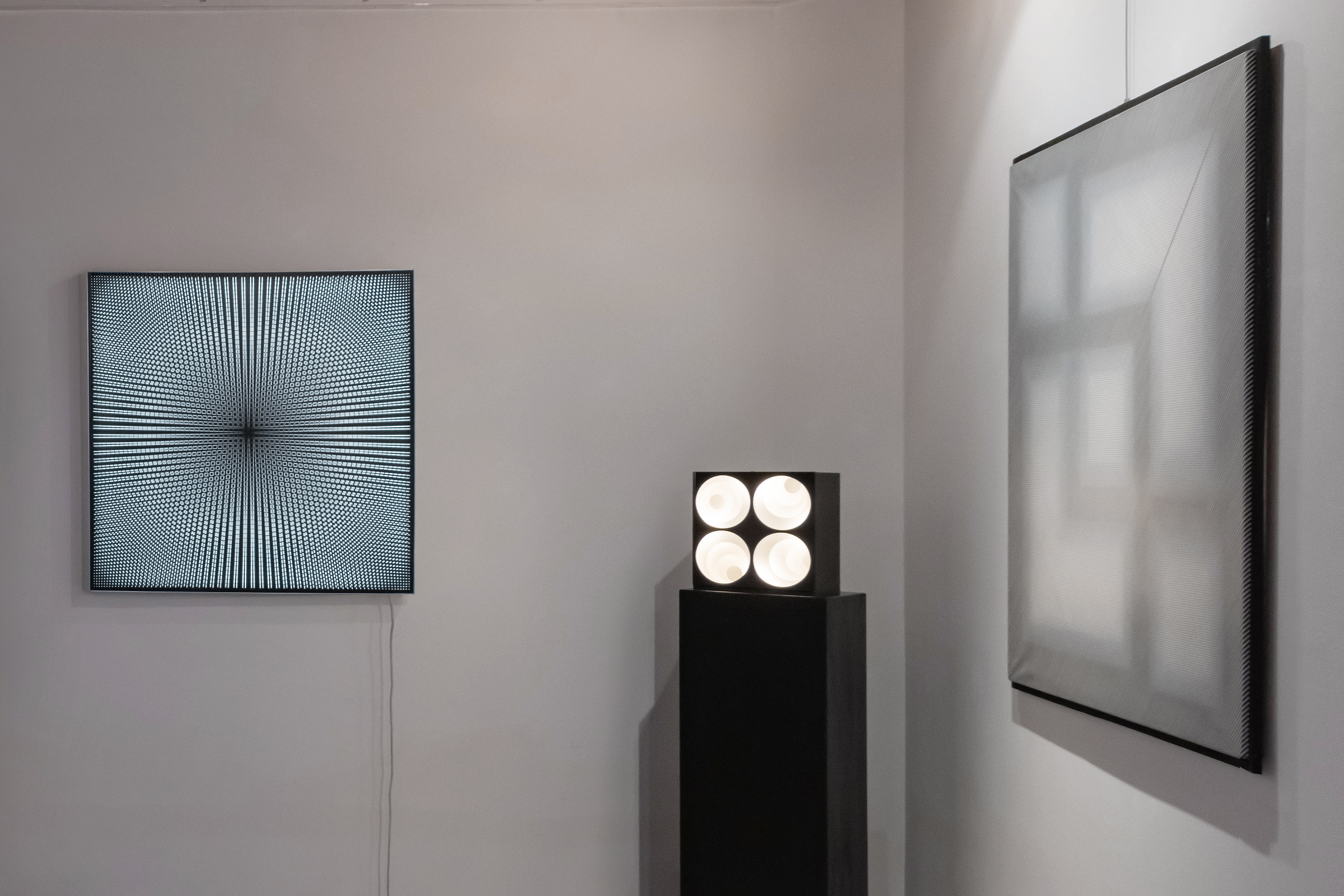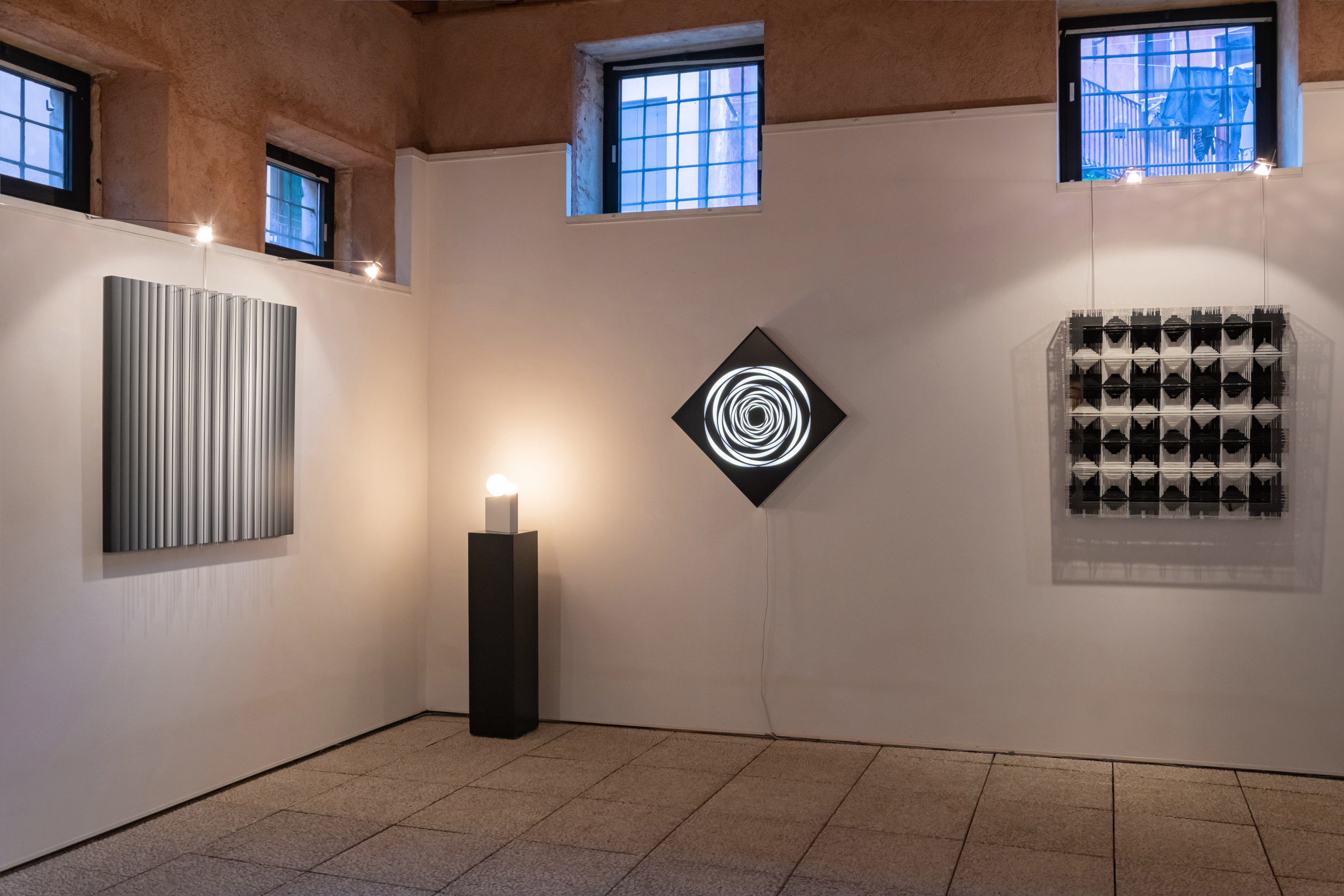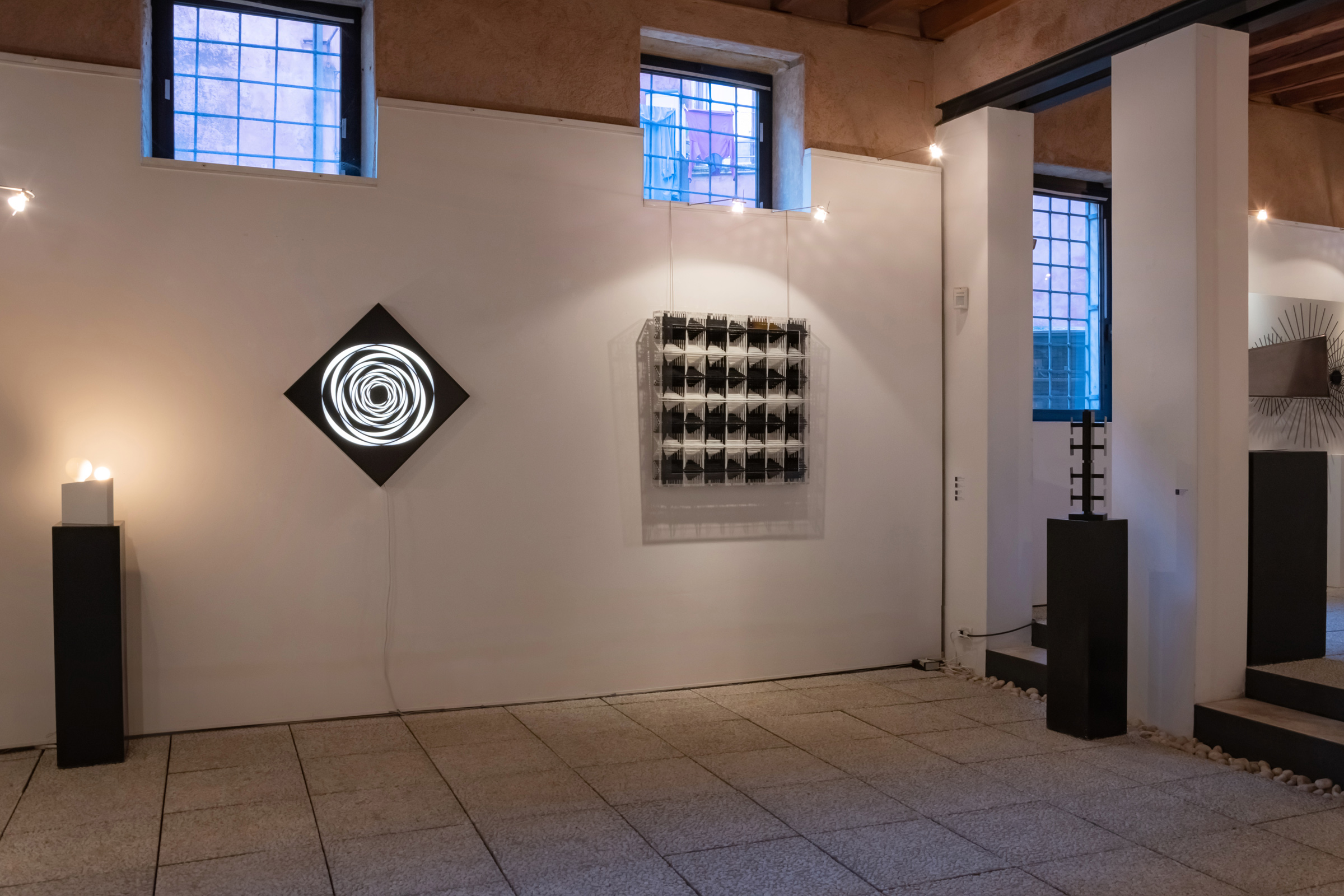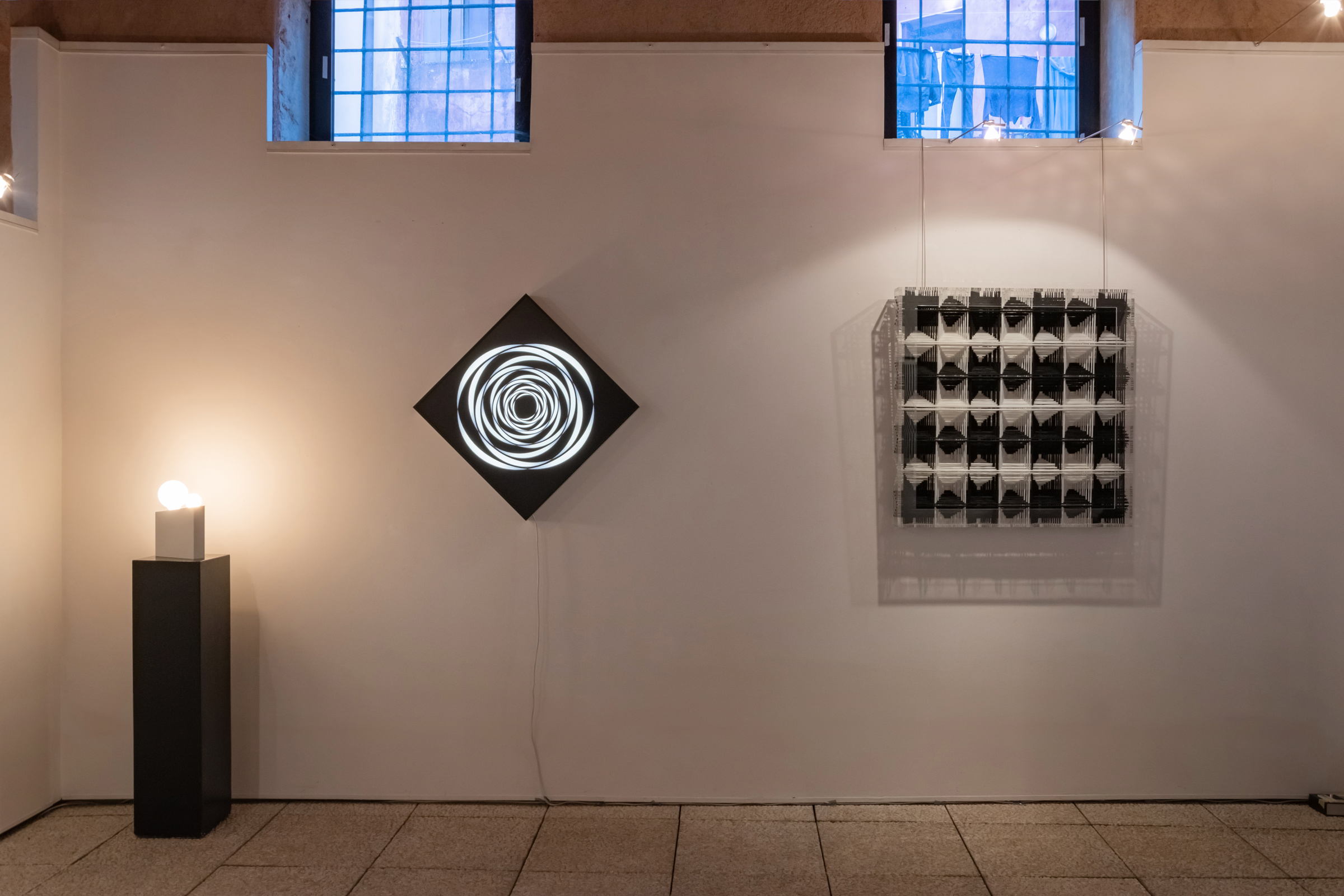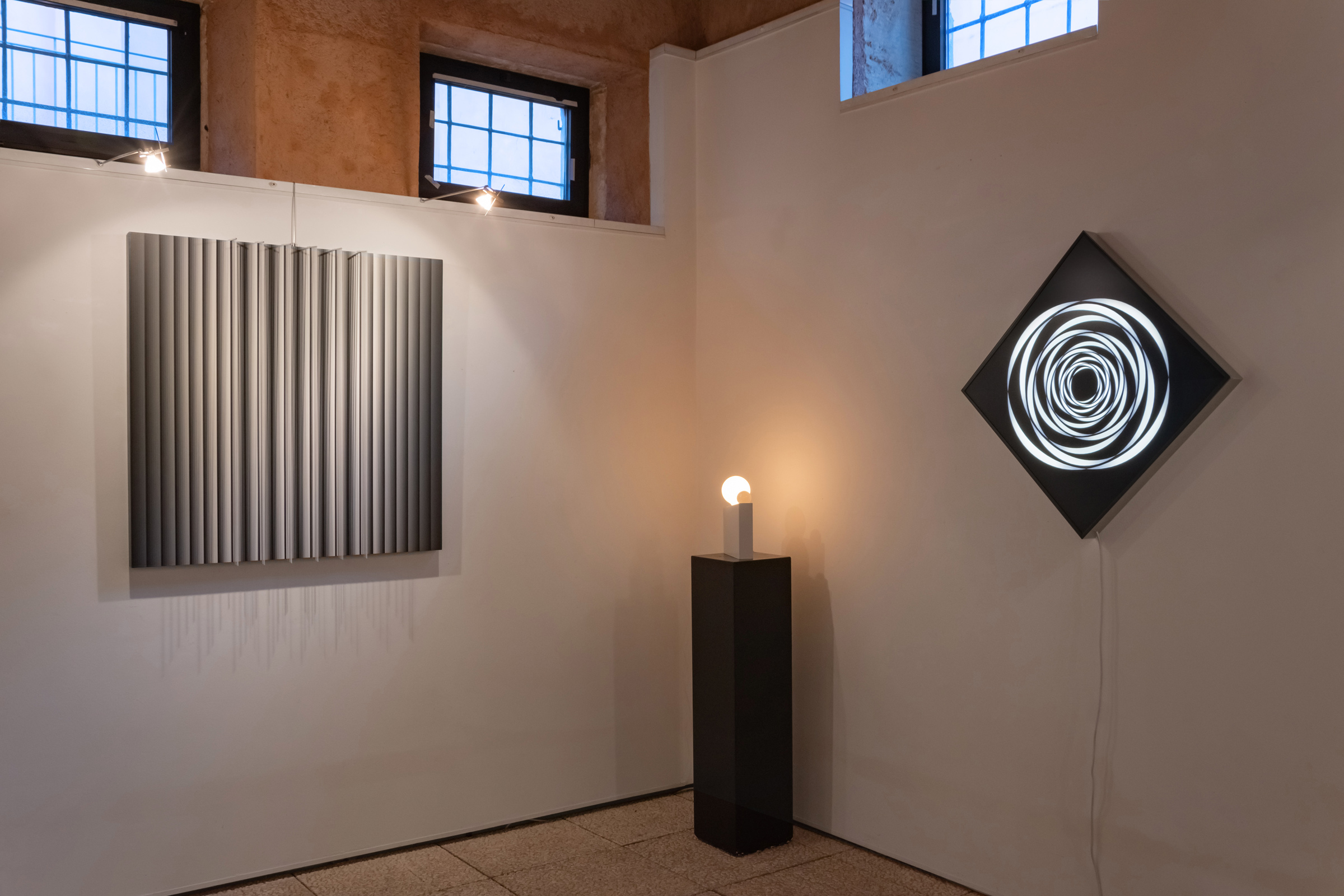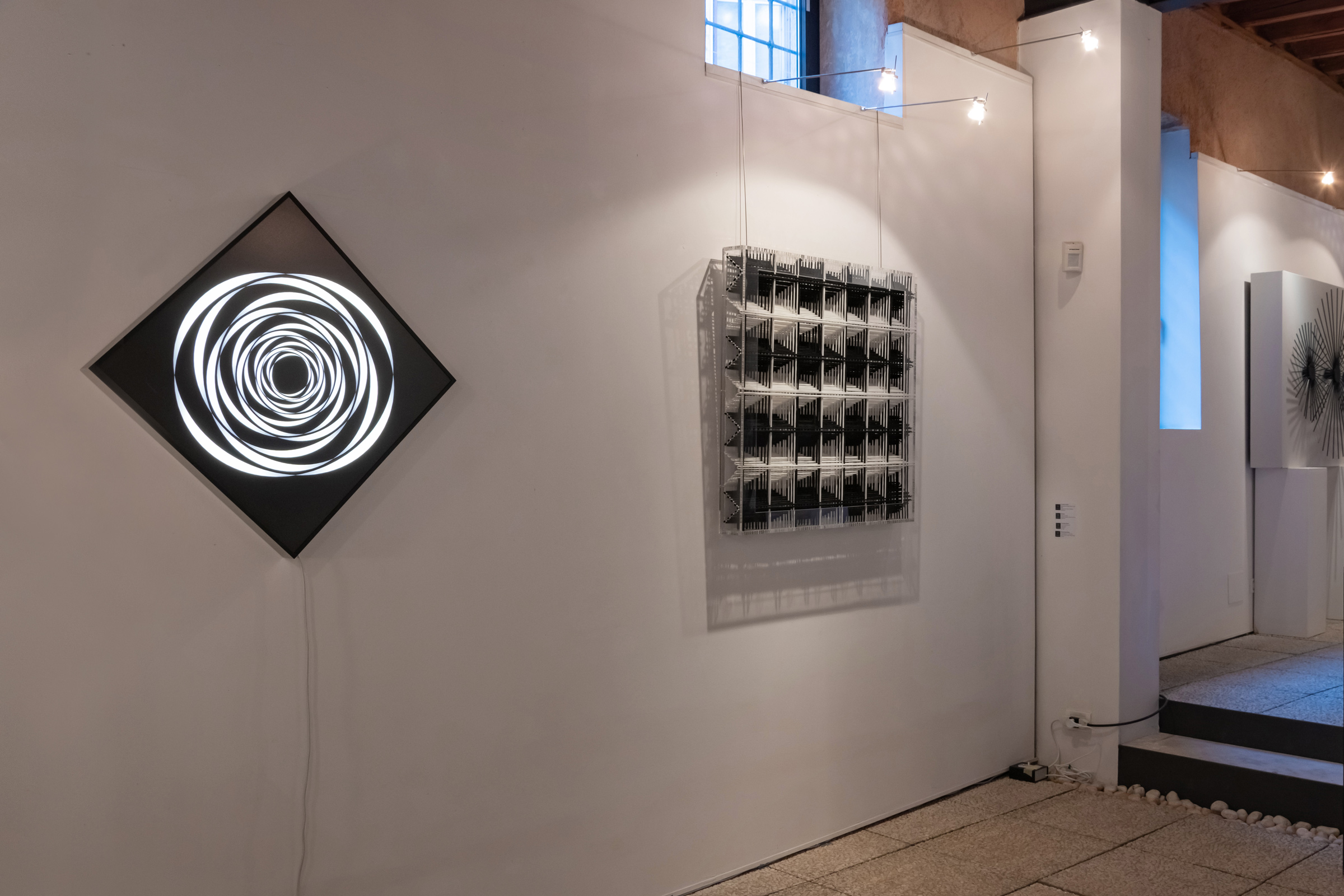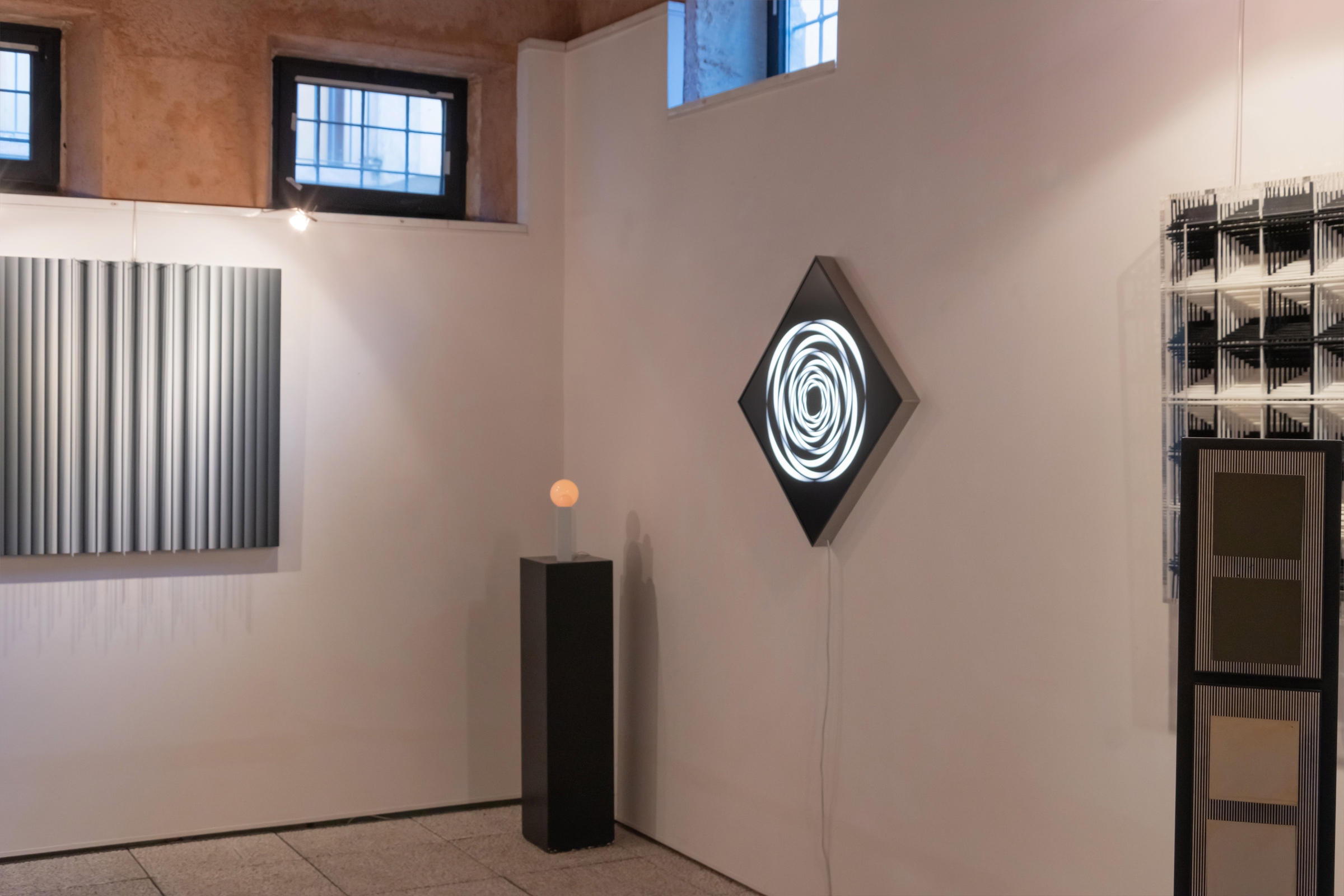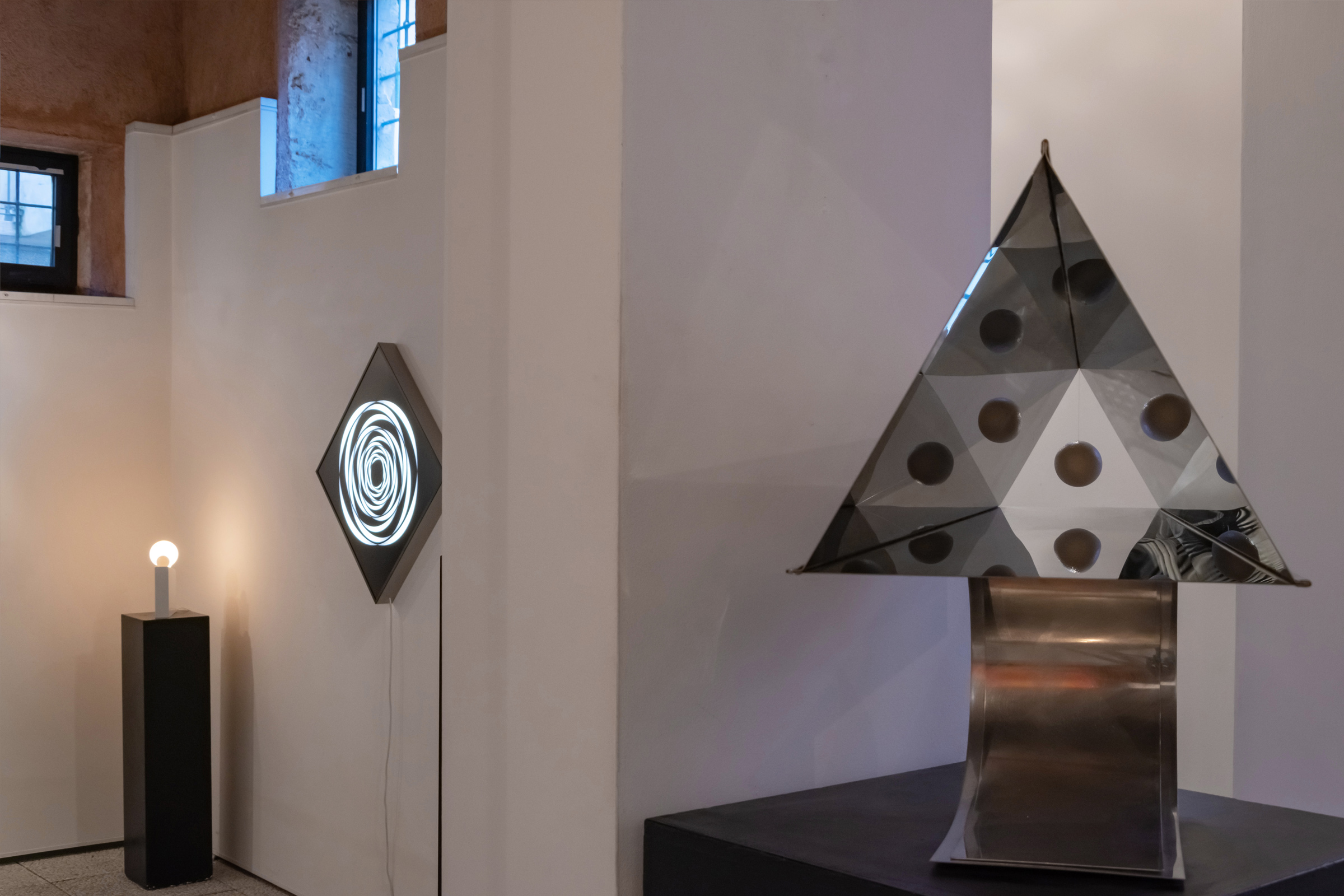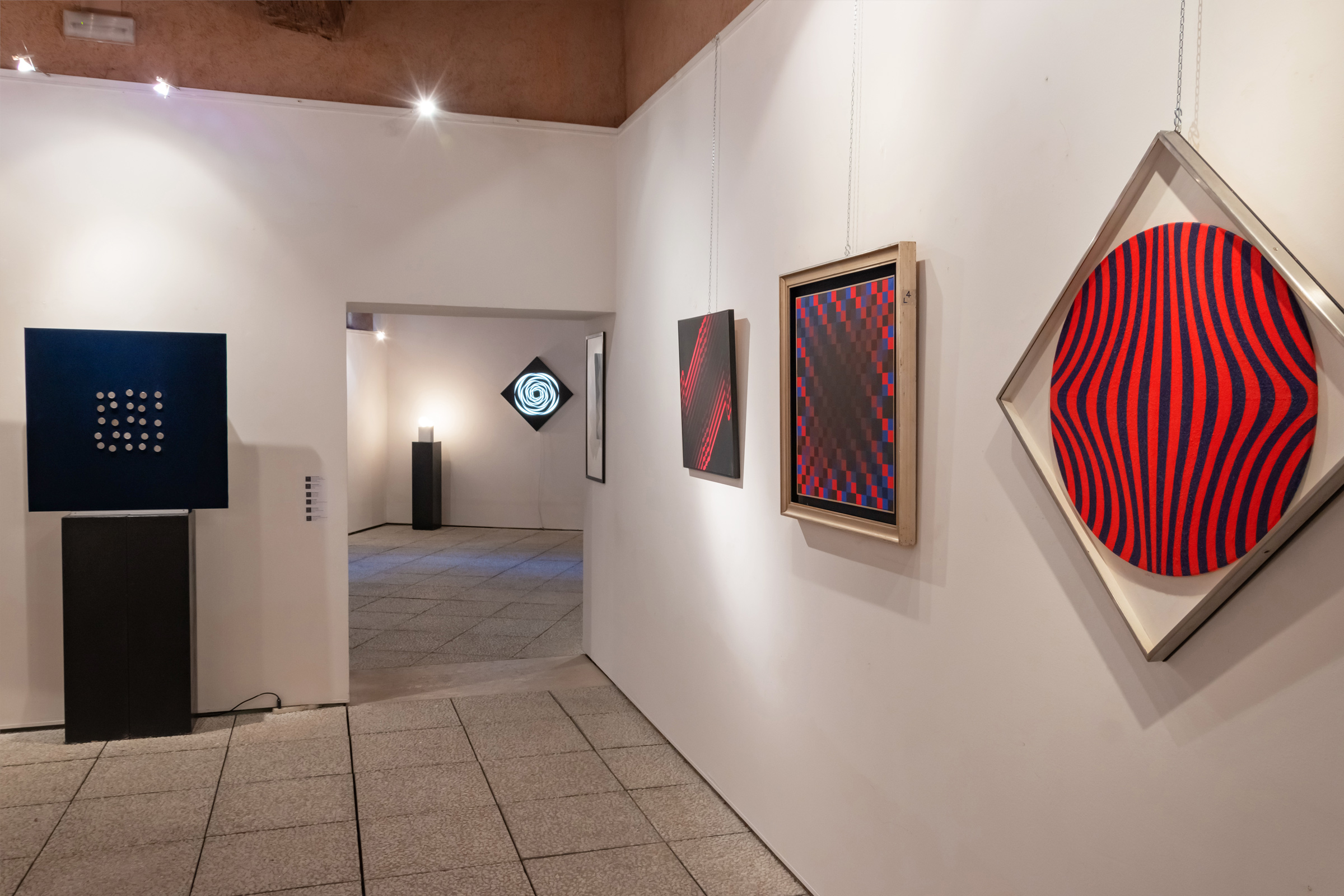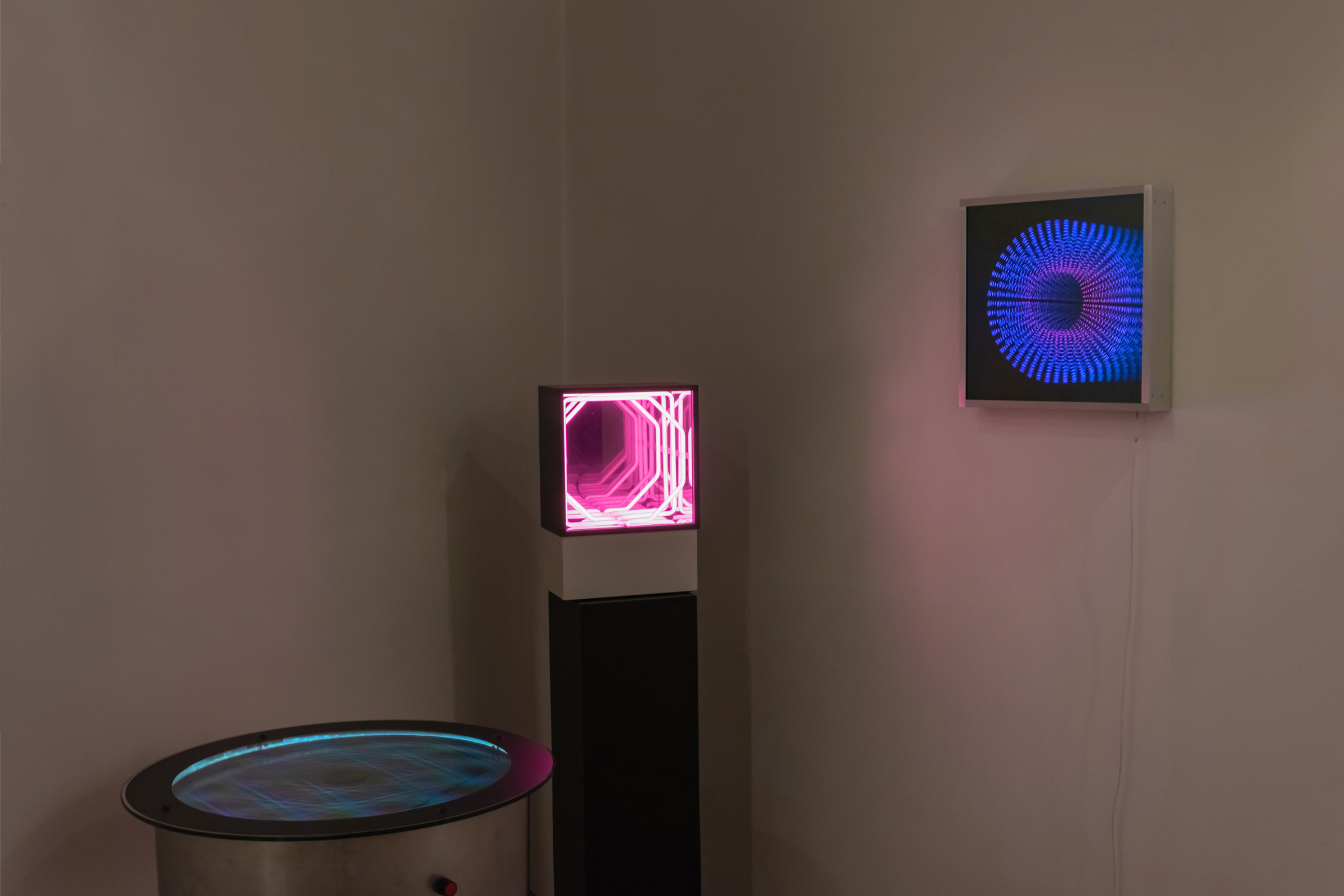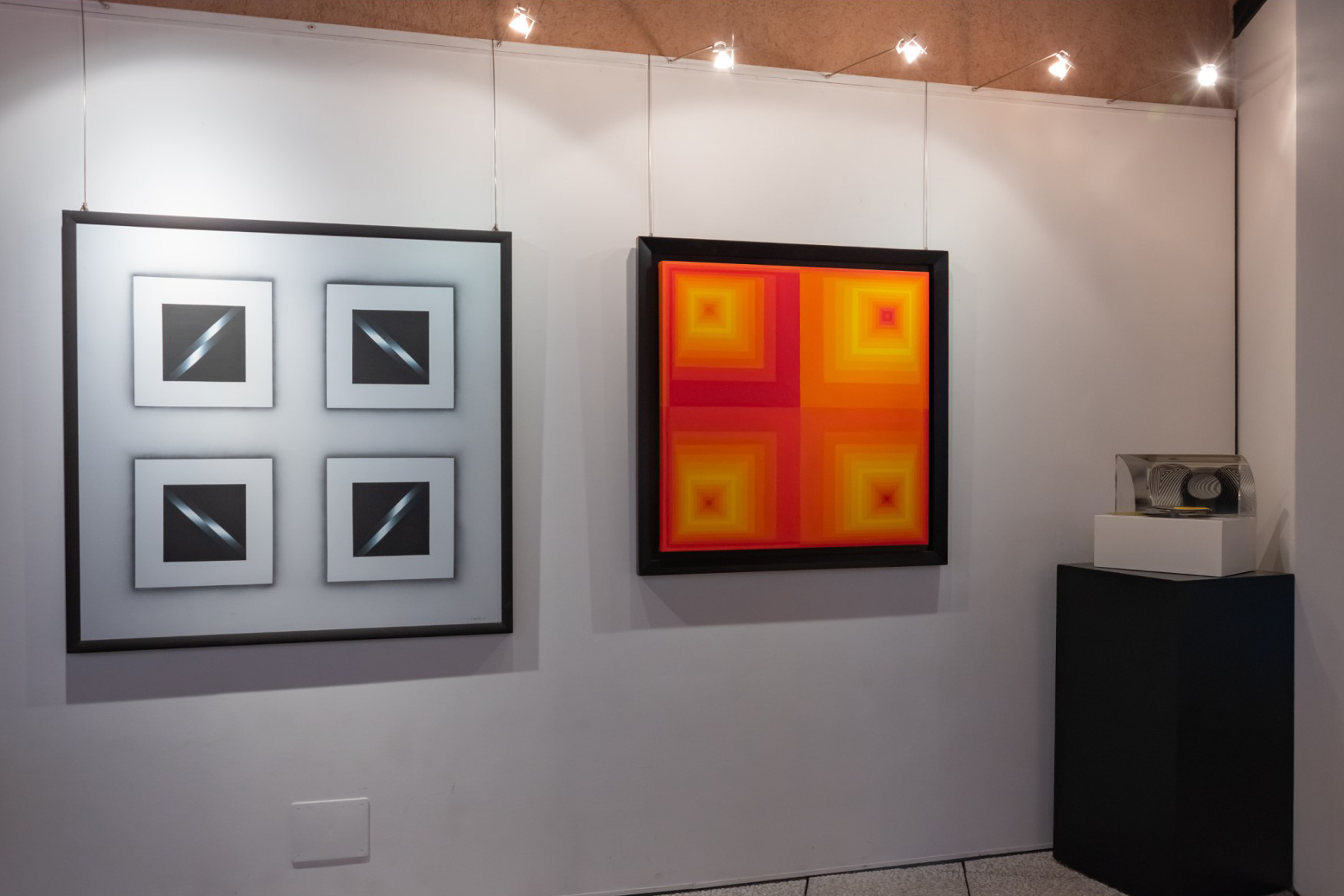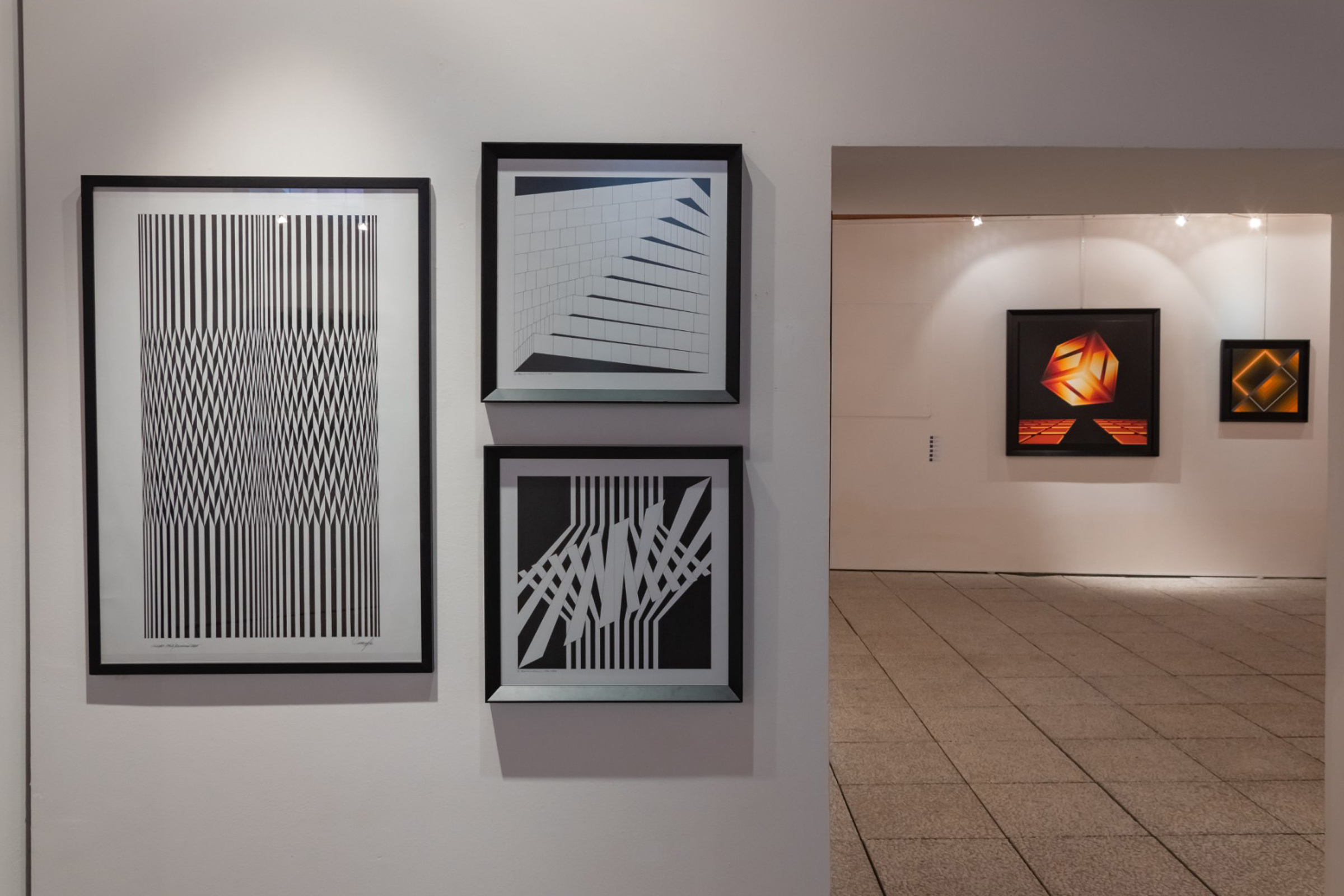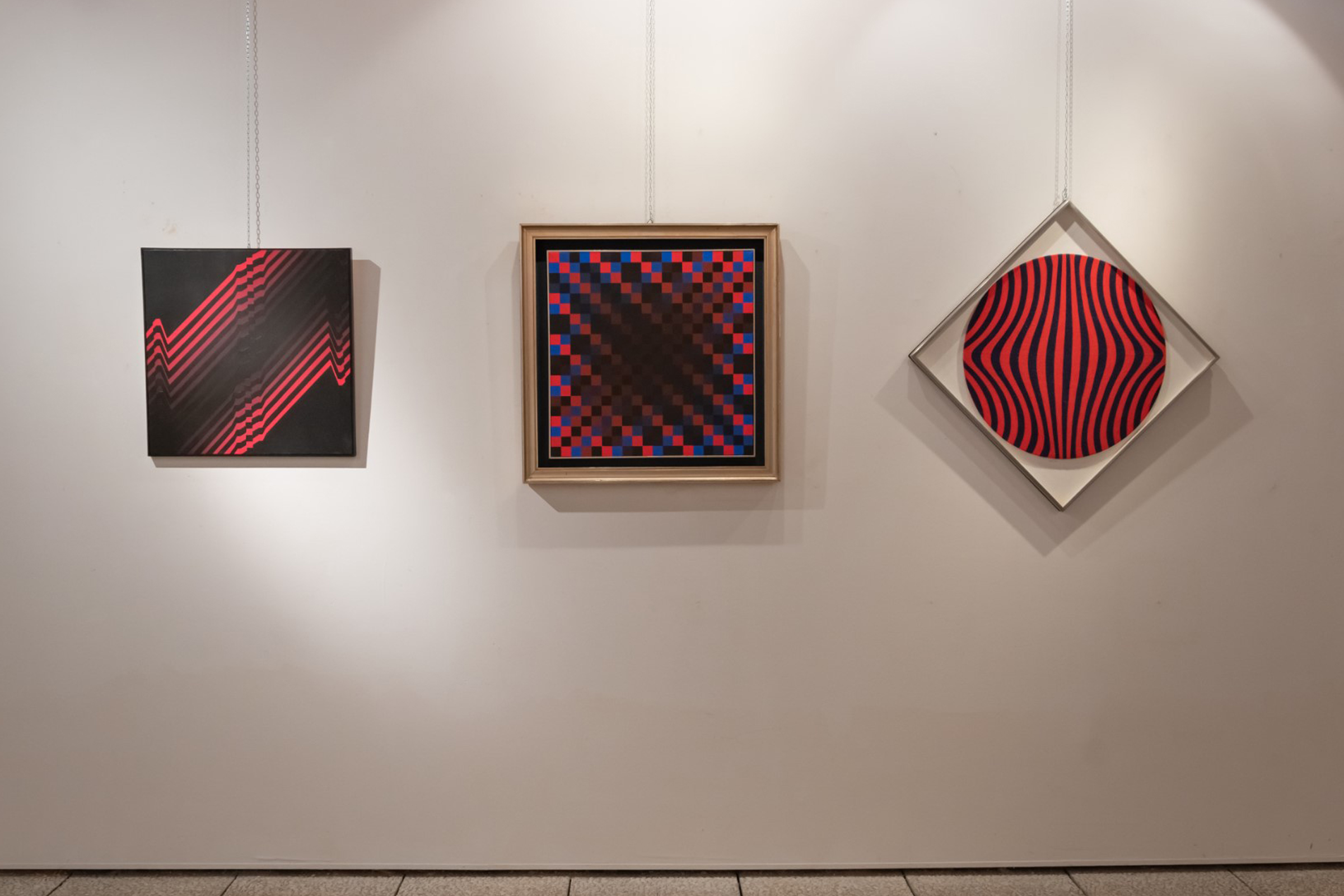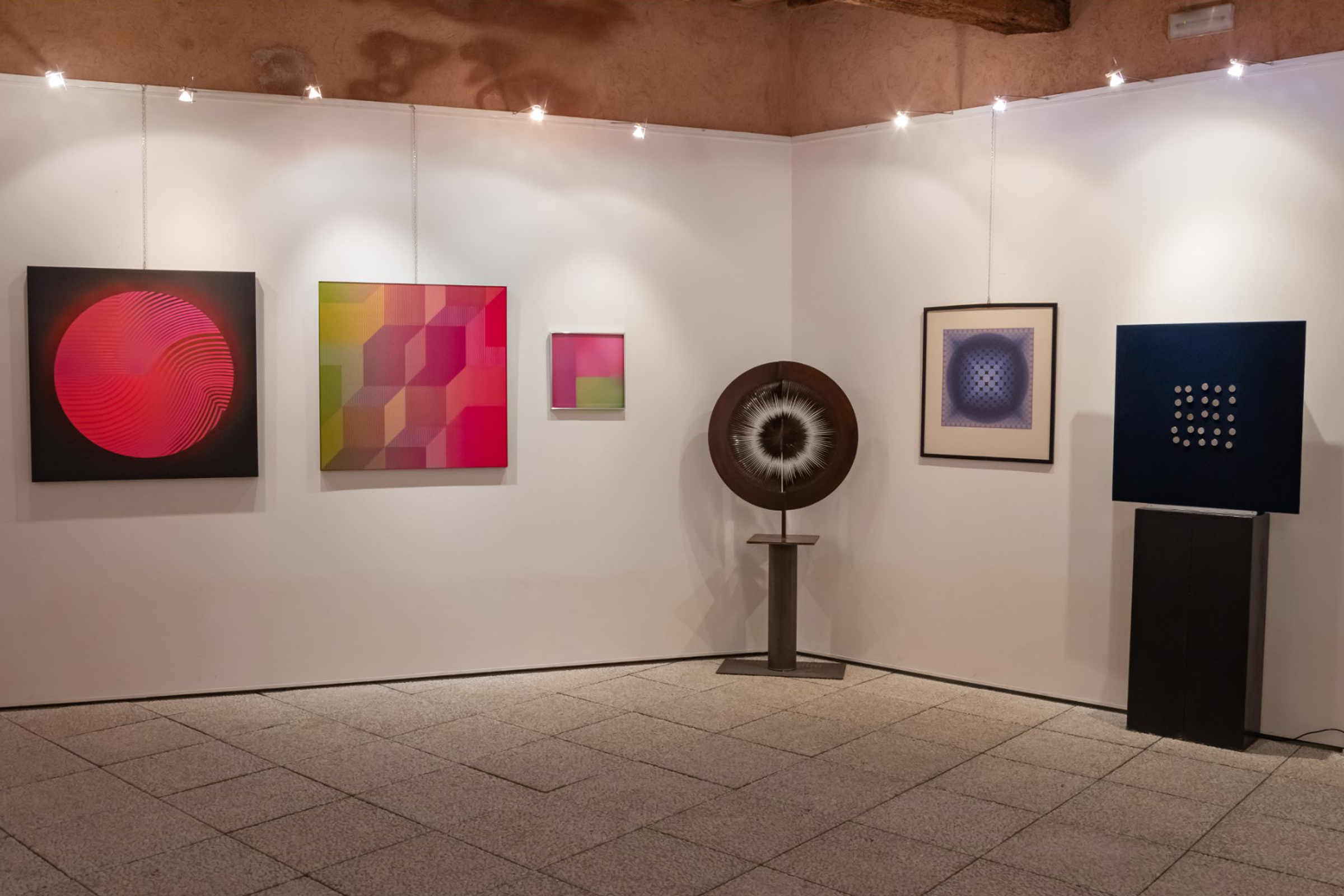how art by playing constructs reality (2 december 2022 - 3 march 2023)
E. Agostini | Bardula | A. Biasi | D. Boriani | E. Careaga | E. Cavallini I G. Colombo | N. Costantini I H. Demarco | B. Eno | H. Garcia Rossi I Gruppo MID | M. Morandini | D. Perez Flores | S. Renko P. Scirpa R. Soto | J. Stein | G. Vardanega | V. Vasarely | G. Villa
The exhibition "The Tricked Eye," proposed by Valmore Studio d’Arte, presents more than thirty works (including painting, sculpture and objects, which at the time were referred to as "aesthetically functioning devices) by more than 20 artists of different backgrounds and ages.
It features works by the members of Group N (from Padua), Group T (from Milan), GRAV (from Paris), and other international artists who have carried out their research in the field of optic-kinetic art on their own without joining the groups of the 1960s.
Through a scanning of works based on the use of Color, the dualism of White and Black, and Aesthetically Functioning Devices, the exhibition highlights the real themes of the optic-kinetic research, which are instability (of vision and reality), movement and variation, and above all a systematic inquiry into the nature of space and time.
Optical art aims to establish a relationship with the viewer's eye, and since 20th century studies on visual perception concluded that the eye cannot be innocent, the work engages the viewer in a relationship of complicity.
The artistic process asks for the participation of the viewer, the eye merges with the work, as the boundaries between the image and its viewer, which one cannot exist without the other. The illusory nature of vision does not tell us that images can sometimes show us what is not there, it tells us that the world is constructed in the moment of interaction with our gaze.
The optic-kinetic artist initiates a process of interaction between work and viewer with a strong playful-exploratory value. Indeed, the viewer is asked to rediscover the ability to live intensely the present, since the "Aesthetically Functioning Device" induces an exploratory activity, typical of childhood play, which, by restoring an extreme intensity of living, opens to the discovery of new experiences and new perspectives, fostering knowledge of the world and awareness of self and the relationship we have with the environment around us.
Excerpt from the gallery statement by Monica Bonollo, curator and director of Valmore studio d’arte
